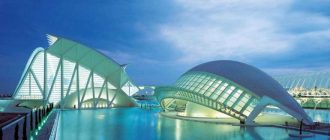Want to learn more about Avila, Spain? Read on for facts and info on this historical city of Spain famous for its architectural wonders…
Located in the province that goes by the same name, Avila has acquired the status of being the capital city of the region. Today this city has been incorporated into the autonomous community of Leon and Castile.
The city is perched more than 1117 meters above sea level, which makes it one of the highest provincial capitals in all of Spain. The first thing that you notice when you reach Avila is a sudden drop in temperature because of the elevated height. The terrain consists of a flat summit which forms part of a rocky hill. The unique hill is situated amidst a mix of wilderness which consists of treeless table land that is brown and arid. It is further surrounded with gray boulders of large-size and finally enclosed by lofty mountains. It is this natural setting that gives Avila its extreme climatic conditions where summers are short and winters are cold and long.
A certain group of historians are of the opinion that Avila is the same ancient town which was referred to as Abula in the days gone by. Historical records indicate that this was one of the first cities of Spain that was officially Christianized at the hands of St. Secundus. At the same time there is another group of historians that suggests Avila was in fact the ancient city of Obila.
Main Sites of Avila
The some of the most notable sights of this Spanish city are the medieval city walls. These were made out of brown granite back in 1090. One can also see elements of breastwork on these walls. The entire city consists of a total of 88 towers along with nine gateways. Over the course of history these architectural wonders have been well preserved and attract a large number of tourists to the region.
The city also has its own Gothic cathedral which was purposely integrated within the defenses of the city. The construction of the cathedral was initiated in the 12th century and it reached its completion in the 14th century. It has been constructed in the form of a fortress and features embattled walls along with solid towers. Inside the Gothic cathedral you can find a variety of paintings and sculptures made by prominent Spanish artists. One of the unique structures inside is the fine silver pyx created by Juan de Arfe.
Avila also houses three other prominent churches including San Pedro, San Vicente and San Segundo. These church buildings are reminiscent of the Romanesque style of architecture that was prevalent in the 12th century. Historical records indicate that the Catholic Queen Isabella was the monarch who initiated the construction of the Gothic monastery of Santo Tomas in Avila. The marble monument inside this monastery is particularly notable and was made by a renowned Florentine sculptor by the name of Dominco Fancelli. The monument was created over the tomb Prince John who happened to be the only son begotten by the pair of Queen Isabella and King Ferdinand.





